
Металлоконструкции 3 курс 1 семестр Шафрай / промышленные здания мк на англ
.pdf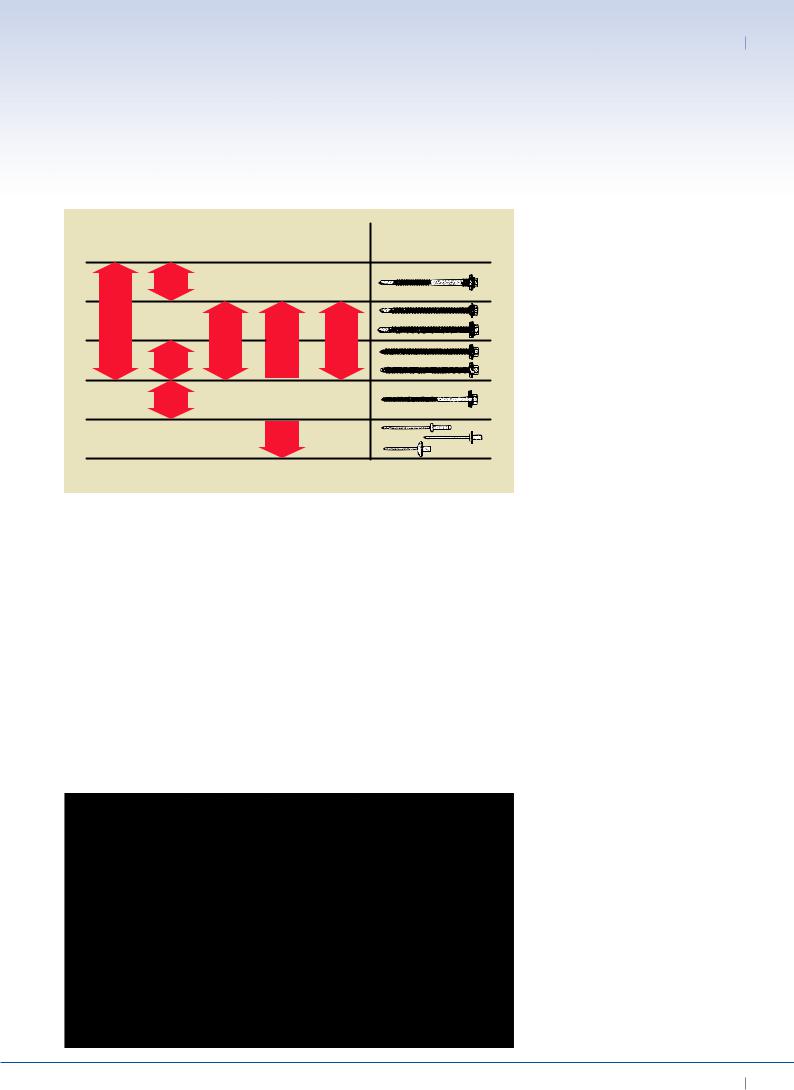
Roof & Wall Systems 04
Sandwich |
Sandwich |
Profile sheet |
long. joint |
transv. joint |
Type of fastening |
Steel Sub- |
Timber Sub- |
Steel Sub- |
sheets/sheet |
sheets/sheet |
element |
structure |
structure |
structure |
|
|
|
|
A |
|
|
|
A |
|
|
|
|
Z |
|
|
|
|
|
|
Stahl-Informations-Zentrum: Dach und Fassadenelemente aus Stahl - Erfolgreich Planen und Konstruieren,
Dokumentation 588, Düsseldorf, 2005
Advantage can be taken from this exposure by integrating a membrane with photoconductive cells into the roof to capture solar energy. There are economic and easy to process products on the market.
Another steel roof cladding system has been developed with an integrated system of water channels in order to collect and use the heat (a solar thermal collector).
Fastening elements
Fastening techniques include the connections of the sheets to the supporting structure and the connections between sheets.
For the fastening of steel sheeting, (self-tapping) screws or rivets are used.
For profiled sheeting, at least every second rib has to be fixed to the supporting structure. If sheets are used as a stressed skin diaphragm, the number of fixings have to be designed so that they resist the applied shear flow.
For sandwich elements, the designer has to consider the influence of the fastening method on the strength of the panel.
Figure 4.8 shows the different types of fastening elements depending on the support structure.
Figure 4.8 Range of application for fastening elements in various claddings
Wall Systems
Numerous systems exist for the design of external walls for industrial buildings. Cladding types made of steel sheeting are most frequently used, because they offer high-quality standards, short construction time and cost-efficiency. Generally, steel sheet wall cladding follows the same generic types as roof cladding, and the main types are:
•Sheeting, orientated vertically and supported on side rails;
•Sheeting or structural liner trays spanning horizontally between primary frame;
Figure 4.9 Horizontal spanning sheeting
EURO-BUILD in Steel 29
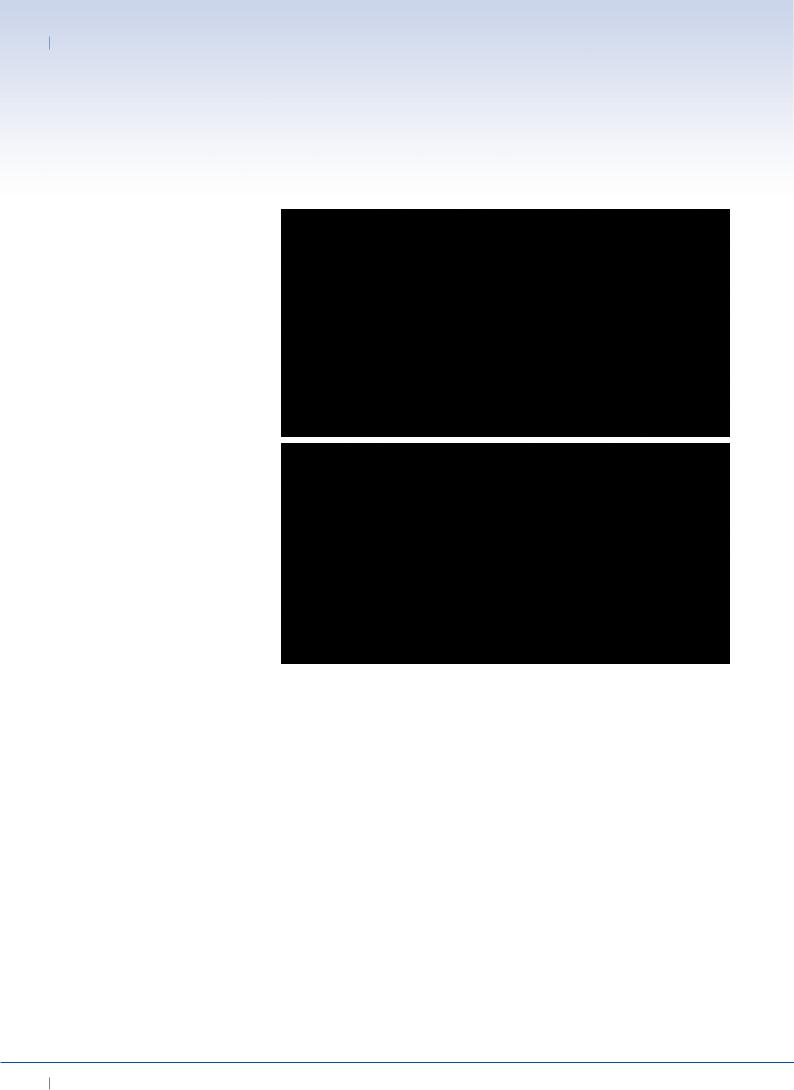
04 Best Practice in Steel Construction - INDUSTriAL Buildings
Figure 4.10 Horizontally orientated composite panels and long
‘ribbon’ corridors.
Figure 4.11 Large window and composite panels with ‘dado’ brick wall
•Composite or sandwich panels spanning horizontally between the columns, eliminating side rails;
•Metallic cassette supported by side rails.
Different forms of cladding may be used together for visual effect in the same facade. Some examples are illustrated in Figure 4.9 to Figure 4.11.
Brickwork is often used as a ‘dado’ wall for impact resistance, as shown in Figure 4.11.
Sandwich or composite panels
Sandwich or composite panels are double skin continuously produced elements with various types of core insulation. They are the most common choice of wall cladding for industrial buildings in Europe. For walls, sandwich elements have widths of 600 to 1200 mm
with a thickness of 40 to 120 mm, and in some cases up to 200 mm for elements used in cold stores.
To achieve a good appearance of the building, the following aspects are important:
•Texture of the surface.
•Colour.
•Detailing of joints.
•Type of fixing.
In addition, for a modern construction system, the client expects practically invisible fixings and clean transitions at the building’s corners. Nevertheless, through fixings are still commonly used. The details comprise either hidden fixings or elements with additional clip fasteners; as shown in Figure 4.5 and Figure 4.12. By the use of additional clip fasteners, slight dents that may occur at the fixings due to improper assembly or temperature influence can be avoided.
For the completion of the facades, special formed components for the transitions between wall and roof have been developed. For high quality facades, manufacturers offer angled or rounded components for the roof or corner sections. These special components have to be of the same quality and colour as the adjacent elements.
Fire design of walls
Where buildings are close to a site boundary, national building regulations usually require that the wall is designed to prevent spread of fire to adjacent property. Fire tests have shown that a number of types of panels can perform adequately, provided that they remain fixed to the structure. Further guidance should be sought from the manufacturers.
It is often considered necessary to provide slotted holes in the side rail
30 EURO-BUILD in Steel
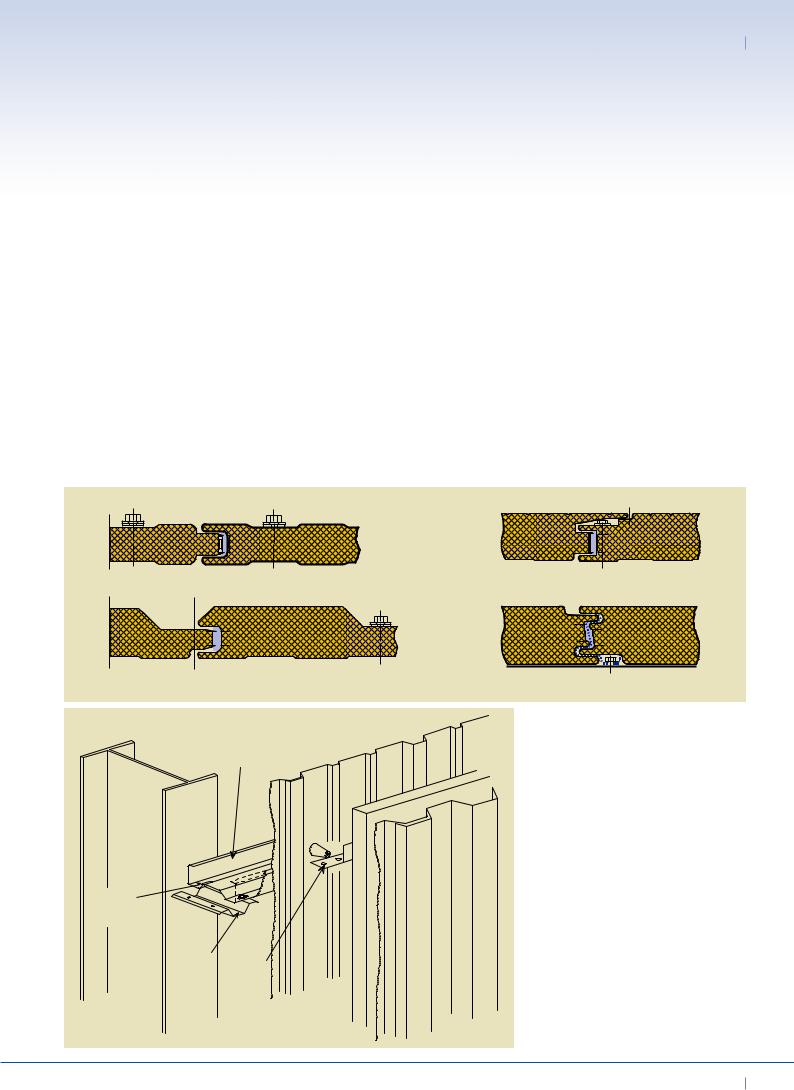
Roof & Wall Systems 04
connections to allow for thermal expansion. In order to ensure that this does not compromise the stability of the column by removing the restraint under normal conditions, the slotted holes are fitted with washers made from a material that will melt at high temperatures and allow the side rail to move relative to the column under fire conditions only.
An example of this type of detail is shown in Figure 4.13.
Other types of façades
Many other types of façade materials may be used for industrial buildings, for example glass, as shown in Figure 4.14.
The use of this architectural high-quality façade does not automatically lead to higher costs. In the example shown in Figure 4.14, hot-rolled sections are used for the structure as well as a standardised façade-system. By integrating solar gains into the thermal balance, running costs are also reduced significantly. The structure supporting the façade and the detailing can be adapted from solutions for multistorey buildings, where these kinds of building envelopes are common practice.
Another modern way of designing industrial buildings in an architecturally appealing way is of the use of different
colours for the façade. A variety of colours, including pastel shading and metallic finishes, are available from many sheeting suppliers. Figure 4.15 shows an example of a building well integrated with its surroundings by the use of coloured facades.
As an additional feature, photovoltaic panels may be integrated in the façade. Despite the fact that the angle to the sun is not optimal, the use of multi-layer coatings makes the solar cells less dependent on the angle of incidence of the sun’s rays. An example of this technology is shown in Figure 4.16.
with hidden bolts
with additional element fastener
(a) Through fixings |
(b) Invisible fixings |
Figure 4.12 (Above) Examples of fixing methods for walls made of sandwich panels.
Stahl-Informations-Zentrum: Dach und Cladding rail Fassadenelemente
aus Stahl - Erfolgreich Planen und Konstruieren, Dokumentation 588, Düsseldorf, 2005
Slotted hole for expansion
Cleat Splice
plate
Figure 4.13 Typical fire wall details showing slotted holes for expansion in fire
EURO-BUILD in Steel 31
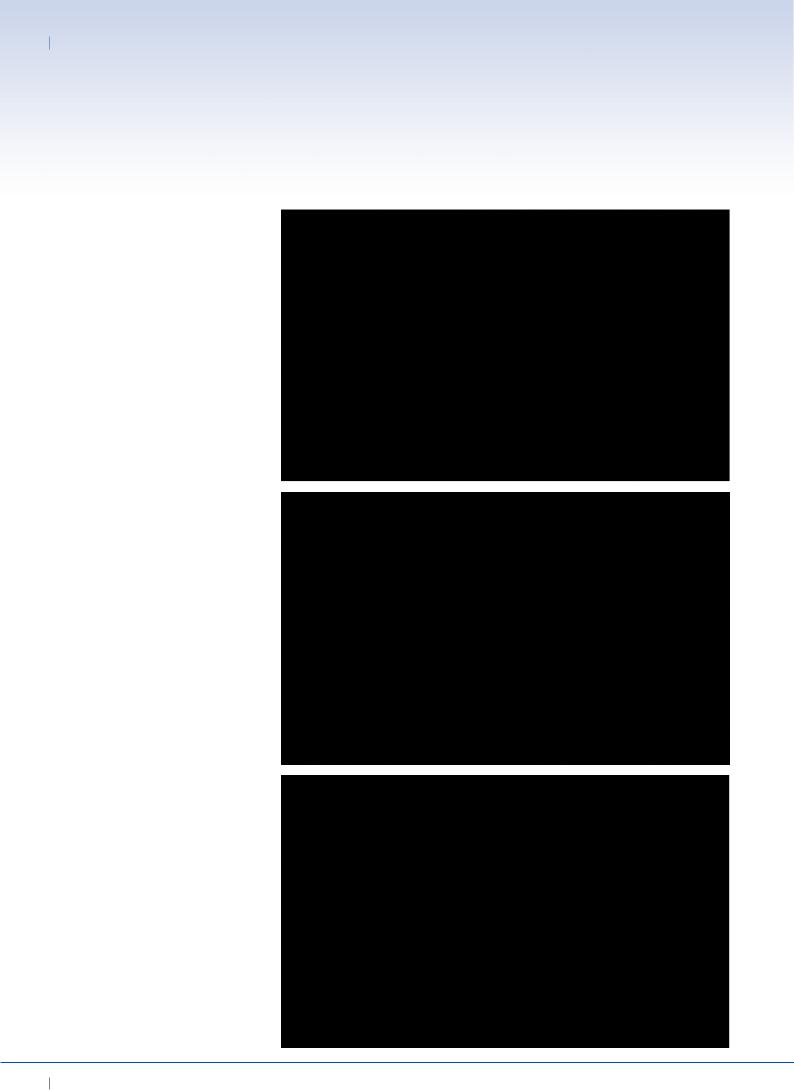
04 Best Practice in Steel Construction - INDUSTriAL Buildings
Figure 4.14 Industrial building with a glazed façade
Bauen mit Stahl e.V.
Figure 4.15 Industrial building with a coloured façade www.tks-bau-photos.com
Figure 4.16 Façade with integrated solar panels www.tks-bau-photos.com
32 EURO-BUILD in Steel
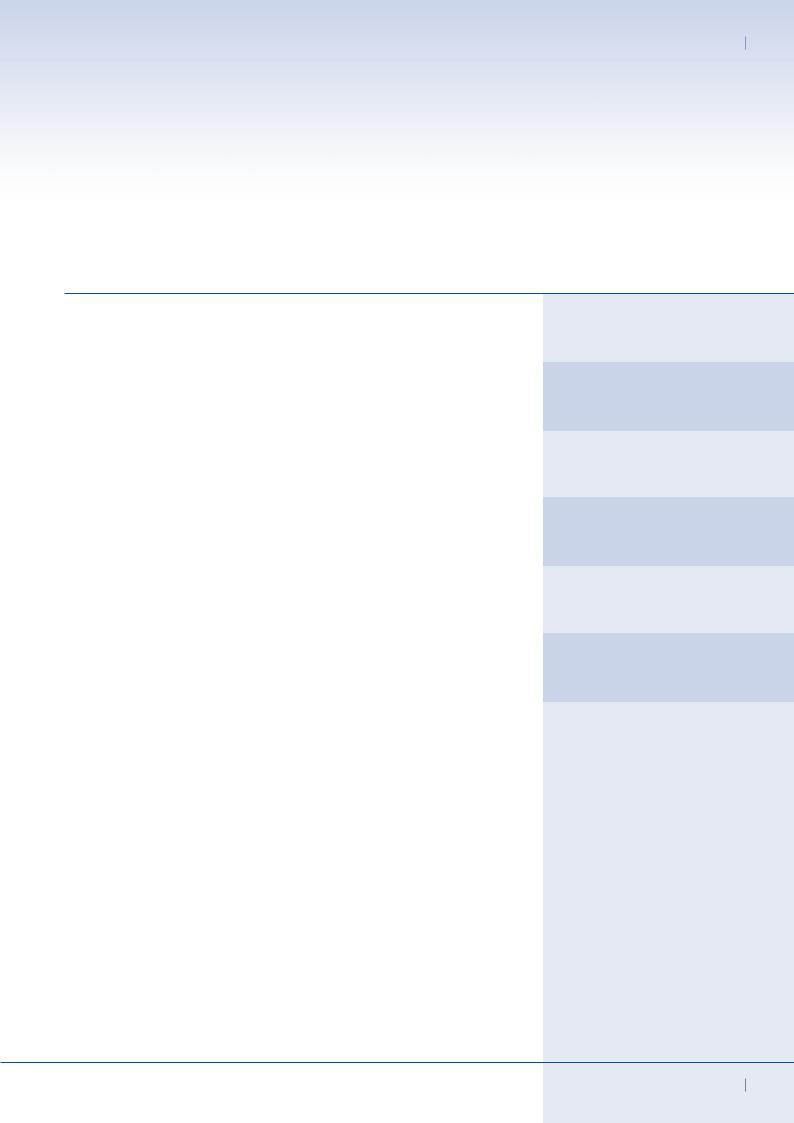
National Practice 05
05 National Practice
In this section, some national practices are given for several countries. The construction systems have been identified as good practice in the countries concerned, although they may not be widely used in Europe.
Current Practice in Germany
Structure
In Germany, industrial buildings are typically constructed as portal frames with pinned column bases. The span of the frames varies from 12 m to 30 m when hot-rolled or welded I-sections are used, and spans are most commonly between 15 m and 20 m. Lattice trusses are a typical solution for spans greater than 30 m. If there are no restrictions in the building usage, multi-bay portal frames using I-sections are often used with spans of up to 20 m.
Other load-bearing structures, such as simply-supported beams on columns, arches, grids, shells, etc. are less often used, except for some architecturally expressive buildings.
The column spacing usually ranges between 5 m and 8 m, while up to 10 m is possible. The eaves height of the frame is about 4.5 m in standard cases, increasing to 8 m and more, if overhead cranes are provided.
The columns of portal frames made of IPEor HE-sections are often designed with rafters which are haunched in the highly stressed regions. Bolted connections are mostly used with continuous columns combined with beams having end-plates, as shown in Figure 3.15. In some cases, the haunched part of the beam is attached to the column in the fabrication shop and the part of the beam with constant height is then connected on site using a bolted connection.
It is equally common for the sheeting to span between rafters and between purlins. About 40% of purlins are hot
rolled and 60% are cold formed, with the cold formed proportion rising.
The design is almost exclusively carried out by using elastic calculation of the internal forces and moments, and comparing these with either elastic or plastic resistances of the cross section. The current design standard is
DIN 18800, Parts 1-5, which is similar to European standard EN 1993 1 1.
Roofing
Roofs of industrial buildings in Germany are usually trapezoidal steel sheeting spanning directly between the portal frames or supported by the purlins.
Currently the single-layer, insulated steel sheeting roof, as shown in Figure 5.1 (left) is the most widely used type of roof cladding in industrial buildings in Germany. For this type of cladding,
the slope should be not less than 2° in order to ensure sufficient drainage.
This type of roof is comparatively low in cost, but is susceptible to mechanical damage of the weather-proofing layer.
Sandwich panel construction, as shown in Figure 5.1(right), has gained more importance, because it is easy to maintain and achieves longer useful life. Further advantages are a higher resistance to damage and good acoustic insulation and fire resistance. Often the waterproofing layer is fixed to the loadbearing layer by a clamped joint with
Germany
The Netherlands
Spain
Sweden
UK
EURO-BUILD in Steel 33
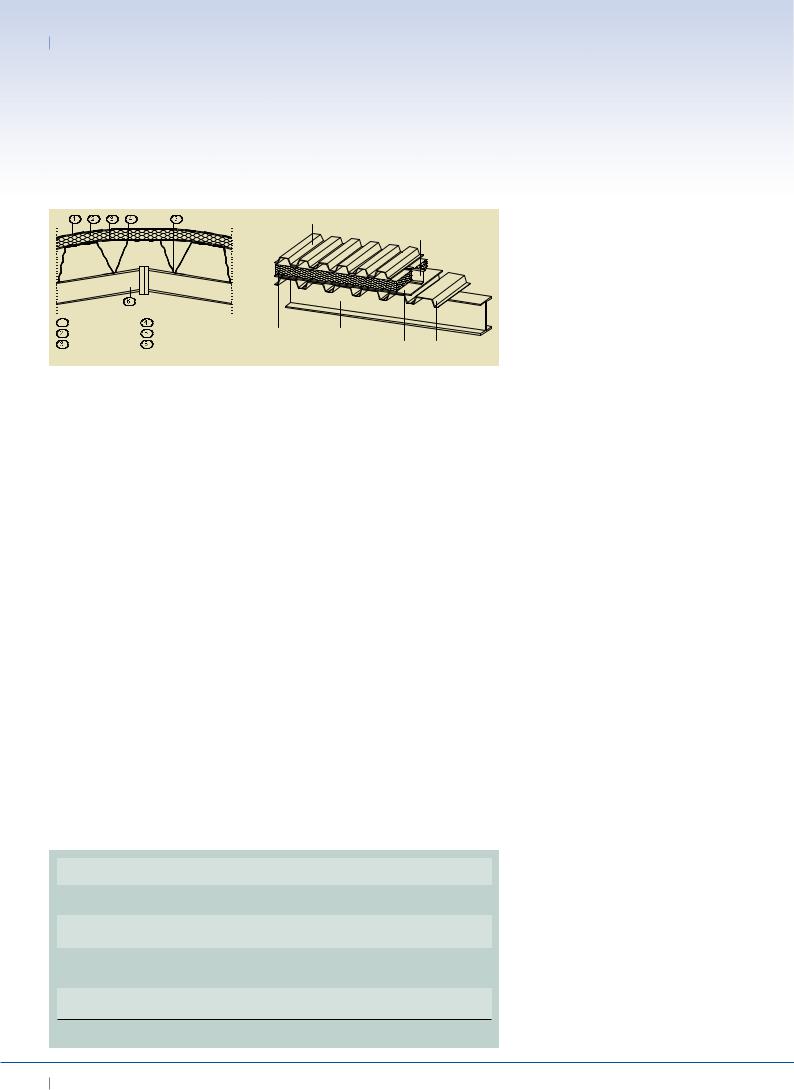
05 Best Practice in Steel Construction - INDUSTriAL Buildings
water-proofing layer
sliding system
sealing |
trapezoidal sheeting |
insulation |
|
|
insulation |
synthetic coating |
beam or purlin |
|
|
vapour barrier |
purlin or beam of frame |
|
vapour barrier |
load-bearing layer |
(if needed) |
|
|
|
|
special sliding system, so that the waterproofing layer does not need to be penetrated.
External walls
For industrial buildings in Germany, many types of walls are used depending on the building use, building physics requirements and the fire boundary conditions.
Systems of profiled, lightweight and large-sized sandwich panels are gaining importance as fire protection requirements are reduced with the introduction of
the ‘Muster-Industriebau-Richtlinie’.
These panels can be installed rapidly and easily and are not affected by weather conditions. They also offer high levels of thermal insulation.
Thermal behaviour
In Germany, the ‘Energy Saving Act’
(ENEV 2002) differentiates between buildings with ‘normal internal temperature’ and buildings with ‘low internal temperature’
(below 19°C) which can very often be found in the industrial sector. For buildings with low internal temperature, only the requirements concerning the heat
transmission losses through the building envelope have to be satisfied.
The heating installation does not have to be considered. There are also fewer restrictions concerning the thermal insulation, which leads to smaller thicknesses of insulation.
Fire safety
In March 2000, a new guideline concerning the fire protection of industrial buildings came into effect, taking into account results of recent research projects dealing with natural fires. In combination with DIN 18230, it regulates the use of fire-protection in industrial buildings in terms of the fire resistance period of structural components, the size and arrangement
of fire compartments, location and length of escape routes.
The guideline provides three calculation methods, of increasing level of complexity:
1.Simplified calculation method.
2.More precise calculation method with determination of the fire-load density, based on DIN 18230-1.
3.Fire-engineering methods.
Fire-fighting measures |
No requirements |
F30 |
|
|
|
No active fire fighting measures (K1)
Automatic fire detection system (K2)
Automatic fire detection system and plant fire brigade (K3)
Automatic fire-extinguishing system (K4)
1,800 m² * |
3,000 m² |
2,700 m² * |
4,500 m² |
3,200-4,500 m² * |
6,000 m² |
10,000 m² |
10,000 m² |
*Area of heat extraction surfaces ≥ 5% and width of building ≤ 40 m
Figure 5.1 Common roofing system for industrial buildings in Germany using trapezoidal steel sheeting
The easier the calculation method, the more conservative is the result.
Using the simplified calculation method 1, single-storey industrial buildings can be designed in unprotected steel up to a plan area of 1,800 m² without providing any active fire-fighting measures. By use of automatic sprinkler units, the maximum compartment size can reach 10,000 m².
If fire-walls are provided, the size of the building can be increased by adding all the compartments together.
Single-storey buildings used as retail premises also have similar low requirements in the fire resistance of the structural components, if sprinklers are provided. The maximum size of the compartments is 10,000 m² also.
The more precise calculation method 2 is based on DIN 18230 1, which determines an equivalent fire-duration. This value relates the parametric heating curve considering the specific parameters for the project to the ISO-curve. It takes into account project-specific parameters like ventilation conditions, etc. By this method,
Table 5.1 Allowable size of fire compartments for industrial buildings
34 EURO-BUILD in Steel
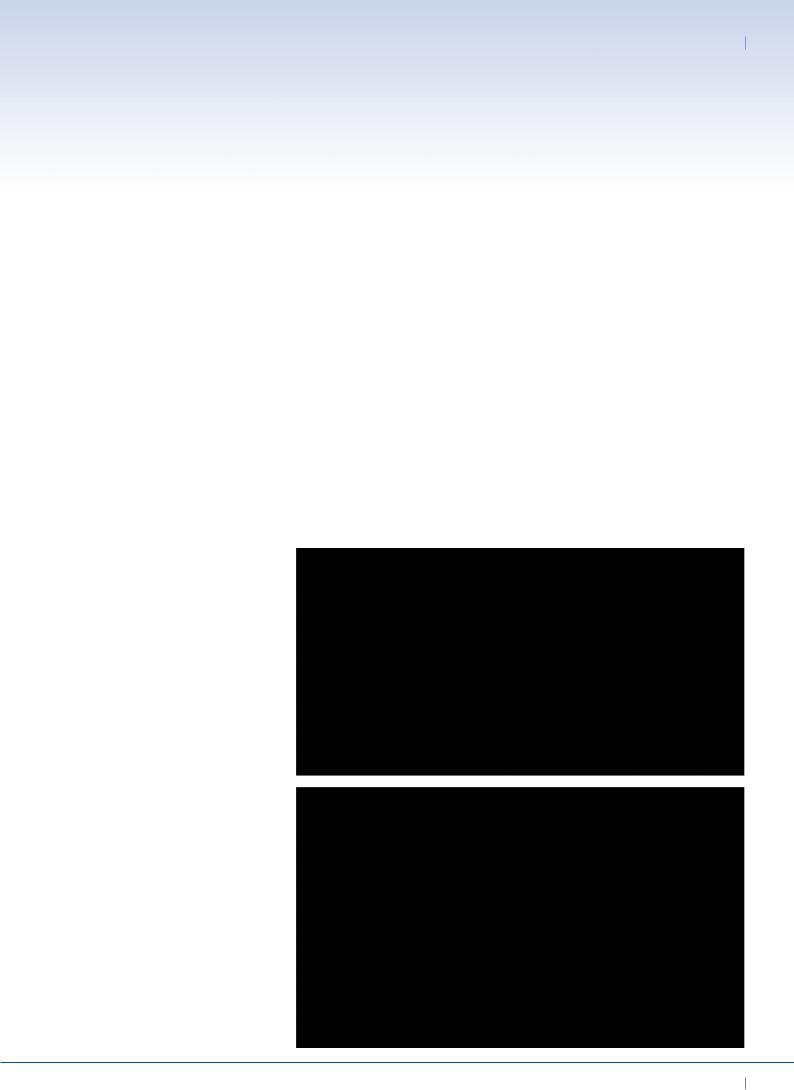
National Practice 05
compartment areas up to 30,000 m² can be designed using unprotected steel.
In addition to the two simplified calculation methods, fire-engineering analysis can also be used. The guideline formulates basic principles for appropriate checks to satisfy the aims of the regulations.
Current Practice in the Netherlands
For many years in the Netherlands, steel has been the most commonly used material for structural, roof and façade systems for industrial and agricultural buildings. The attributes of steel construction are beneficial to
single-storey buildings with long spans:
•Speed of construction;
•Economic building cost;
•Lightweight;
•Pre-fabricated systems;
•Industrially produced components;
•Flexibility in use;
•Easily demountable;
•Reusability at three levels: material, element and building.
Construction
The vast majority of industrial buildings are single-storey, single-bay ‘sheds’.
These sheds are sometimes combined with offices. Multi-bay structures are a minority.
For single-storey buildings with a span up to approximately 25 m and a height up to approximately 6 m, portal frames with fixed connections are the preferred solution (Figure 5.2).
For single-storey buildings higher than 6 m, a steel frame with hinged connections and wind bracing is more
economic. In this case, the connections are more complex but material use is more efficient.
A common industrial building in the Netherlands consists of portal frames of hot-rolled sections. The columns are
HEA180 and the roof beams are IPE500 at 5.4 m spacing. Cold-formed profiled roof elements of typically 106 mm depth are popular. Wall elements are commonly 90 mm deep liner trays with cladding profiles fixed to the outside.
For single-storey buildings with spans longer than 25 m, trussed beams are preferred (Figure 5.3). Castellated and
Figure 5.2 For free spans up to 25 m, hotrolled sections are preferred
Figure 5.3 For longer spans trussed beams are a popular alternative
EURO-BUILD in Steel 35
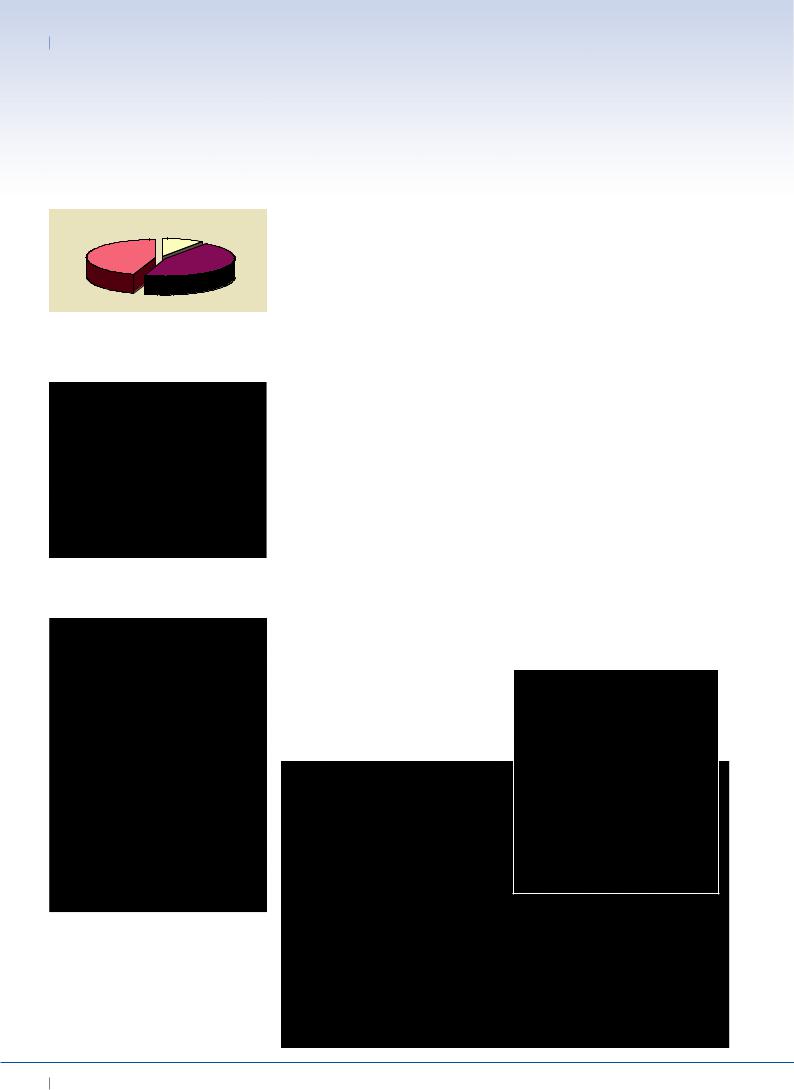
05 Best Practice in Steel Construction - INDUSTriAL Buildings
non-steel 10%
sandwich 45%
cladding 45%
Figure 5.4 Market shares of steel façade systems in industrial buildings in the Netherlands (2006)
Figure 5.5 Trapezoidal roll-formed profiled sheet fixed to liner trays
Figure 5.6 Sandwich panels
Figure 5.7 (Right) The majority of industrial buildings are single-storey, single-bay sheds combined with offices. Most industrial buildings have flat roofs.
Pitched roofs are common in agricultural buildings (Inset)
cellular beams are becoming a popular alternative to solid web sections.
Suspended and cable-stayed constructions can be economic for extremely long spans and for suspending heavy installations.
Façades
In the year 2007, Bouwen met Staal carried out a market survey of the use of façade and roof elements in industrial buildings in the Netherlands. It showed that steel cladding has a market share of approximately 90%. The remaining 10% comprise largely of masonry walls below the window sill.
Approximately half of the steel façades in industrial buildings consist of trapezoidal profiled sheet fixed to liner trays.
The other half comprise steel sandwich panels. With respective outputs of 2 and 1.5 million m2 per year, these two façade systems are, together with brickwork, the most commonly used products for exterior walls.
Roofs
Unlike other European countries, the vast majority of industrial buildings in the
Netherlands have flat roofs. Pitched roofs are very rare in single-storey buildings in
the Netherlands, except for barns and stables in the agricultural sector.
Approximately 80% of the roofs on industrial buildings consist of roll-formed profiled sheet fixed directly to the roof beams or to intermediary beams. About 15% are sandwich elements and 5% are non-steel.
Ponding on flat roofs
A point of interest is the ponding of large amounts of water on flat roofs. On one day in 2002, six roofs collapsed due to heavy rainfall. In response to these problems, the Ministry of Housing, Spatial Planning and the Environment set up a research team. One of the results is the practical guideline NPR 6773, which is published as an amendment to NEN 6702: Technical principles for building structures. Loadings and deformations. This simpler and more robust calculation method, in combination with more accurate supervision and control, has led to a significant decrease in problems caused by flat roofs.
36 EURO-BUILD in Steel
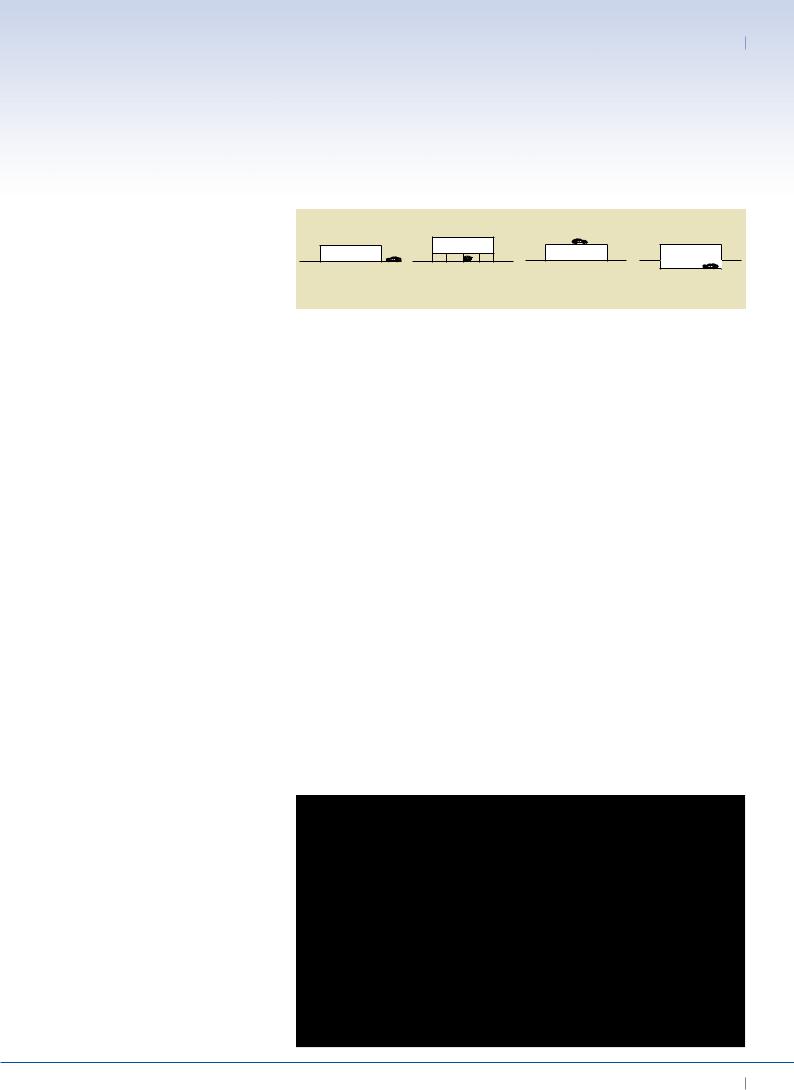
National Practice 05
Figure 5.8 |
(a) Parking next to the building, |
(a) |
(b) |
(c) |
(d) |
|
(b) Under the building, |
||||
|
|
|
|
|
(c)On top of the building,
(d)Below ground level
Fire protection
The main reason for the high market share of steel products in industrial buildings is the requirement for fire resistance. In the Netherlands, these requirements are relatively low in comparison to other European countries.
For single-storey buildings and most industrial buildings with a small office, there are no requirements for fire resistance from the construction. In some cases, 30 or 60 minutes is required for escape routes, for fire compartments or for prevention of fire spread between spaces and to adjacent buildings. These requirements are usually easy to meet with simple fire protection measures.
Parking
At the moment about 70,000 hectares of land is in use as an industrial development area. This is approximately 2% of the total area of the Netherlands. The Dutch government is trying to stop the rapidly increasing area zoned for economic activities. Increasingly, industrial and commercial buildings in these districts
will be renovated, and it is encouraged to find a parking solution inside the building envelope to decrease the pressure on public space (Figure 5.8).
Energy
In 2012, all new industrial buildings will have to be ‘energy neutral’. This means that the energy consumption has to be equal to or less than the energy produced. In the town of Zaandam, an experimental
‘zero-energy shed’ has been built with promising results, and this technology is potentially useable more widely.
Current Practice in Spain
Structure
Most industrial buildings in Spain are constructed from built up sections, although hot rolled sections are often used for bespoke shed designs. Construction components include structural systems, roof and wall cladding systems. The pre-engineered systems are delivered on site ready to be assembled. This complete process is quick, efficient and economic.
The structural elements in many Spanish
industrial buildings can be identified as:
•Built-up ‘I’ shaped sections for the primary structure of portal frames (tapered columns and rafters from 750 mm deep to 1280 mm deep, usually from steel grade S275JR).
•Cold-formed ‘Z’ and ‘C’ shaped sections for the secondary structural members (roof purlins, side walls, etc.).
•Roof and wall cladding systems in compliance with new fire regulations.
Generally, tapered rafters have spans of 25-50 m but it is possible to design spans of 60-70 m without intermediate supports. On the other hand, the typical spacings between portal frames are 9-10 m, and columns are of 7-12 m height.
The complementary sub systems consist of mezzanine floors, crane runway beams, crane beams, roof platforms, canopies, parapets, and all accessories needed for a complete and functional building.
The foundation requirements of these steel buildings are reduced significantly because of the open spaces provided by
Figure 5.9 Single portal frames with tapered columns and rafters under construction in Spain
EURO-BUILD in Steel 37
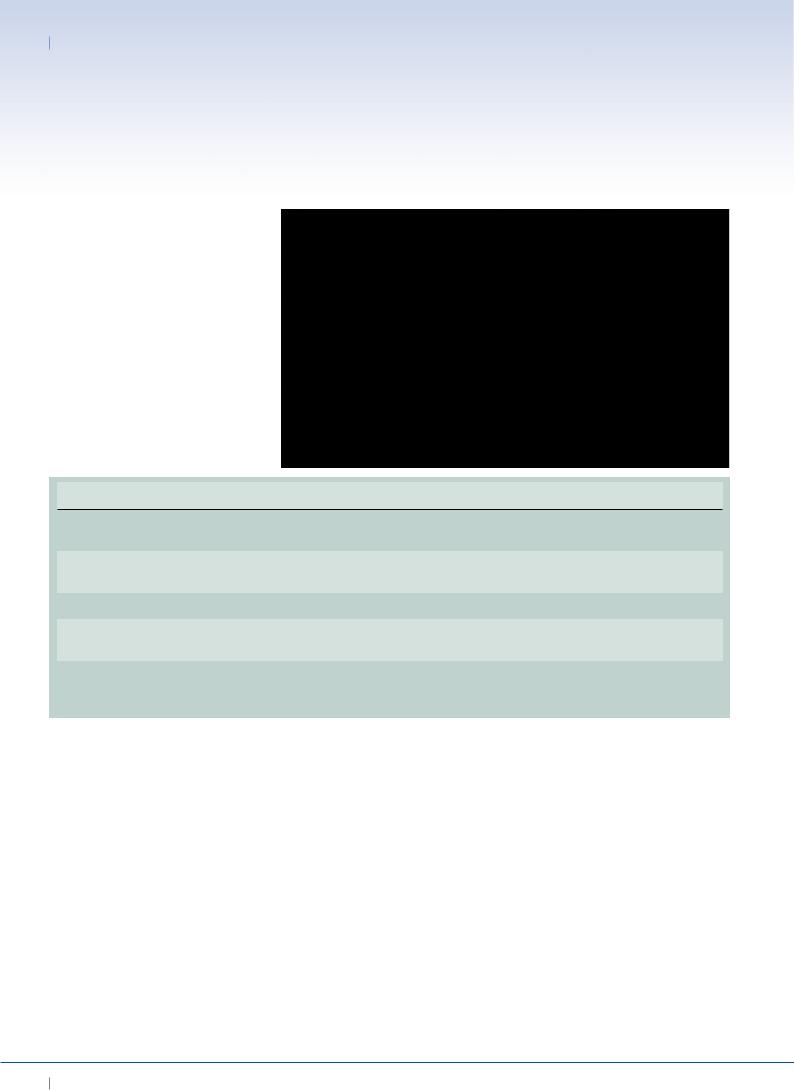
05 Best Practice in Steel Construction - INDUSTriAL Buildings
Figure 5.10 Interior structure of an industrial building with tapered columns
Table 5.2 Regulations affecting the design of industrial buildings in Spain
Code Description
EAE
CTE
EN 1993-1-1
EN 1993-1-3
RSCIEI
Spanish Structural Steel Design Code (Instrucción de Acero Estructural). This regulation will be compulsory in 2009.
Spanish Technical Building Code (Código Técnico de la Edificación): Basic Documents: Basis of design (DB-SE), actions (DBSEAE) and design of steel structures (DB SE A).
Eurocode 3: Design of steel structures. Part 1-1: General rules and regulations for buildings.
Eurocode 3: Design of steel structures. Part 1-3: Supplementary rules for cold formed thin gauge members and sheeting.
Spanish Regulation of Fire Security in Industrial Building (RSCIEI - Reglamento de Seguridad Contra Incendios en los Establecimientos Industriales) The RSCIEI is a compulsory document for the fire safety design of industrial buildings.
the clear span system, the longer bay lengths and the lower weight of the structure.
Steel industrial buildings use a variety of materials that satisfy a wide range of structural requirements. This flexibility provides an unlimited range of building configurations and applications.
Structural advantages
This structural system offers many advantages compared to traditional construction. Advanced design and fabrication methods help to reduce costs through faster construction and minimised labour on site.
Structural systems, walls, roofs and compatible accessories have the following advantages:
•The use of tapered built-up primary structural members (columns and rafters) results in up to a 40% weight advantage for the main rigid frames when compared to the use of conventional hot rolled sections.
•The use of ‘Z’ shaped secondary structural members (roof purlins and side rails), particularly the overlapping of the ‘Z’ shaped purlins at the frames, results in up to a 25% weight saving for the secondary members.
•Generally, all the components are factory-produced on automated production lines, saving many problems in installation.
•The steel scrap from the manufacture of built-up plate members and cold formed ‘Z’ sections is reduced.
•All steel is structurally efficient.
Public and private companies, contractors and designers benefit as a result of the cost savings and from the faster construction process.
Regulations
The main regulations affecting the design of industrial buildings in Spain are given in Table 5.2.
Fire safety engineering
The Spanish Fire Safety Regulation for industrial buildings (RSCIEI) requires an assessment of the fire resistance of the building according to the expected fire loads, compartment size and neighbouring buildings.
Although it is possible to design industrial buildings without additional structural fire
38 EURO-BUILD in Steel
